
New Year, New Garden – Part V: Planting and Maintaining

Over the weeks we have planned and prepared for a new home garden. Now we are at the final leg of our journey: planting and maintaining our gardens!
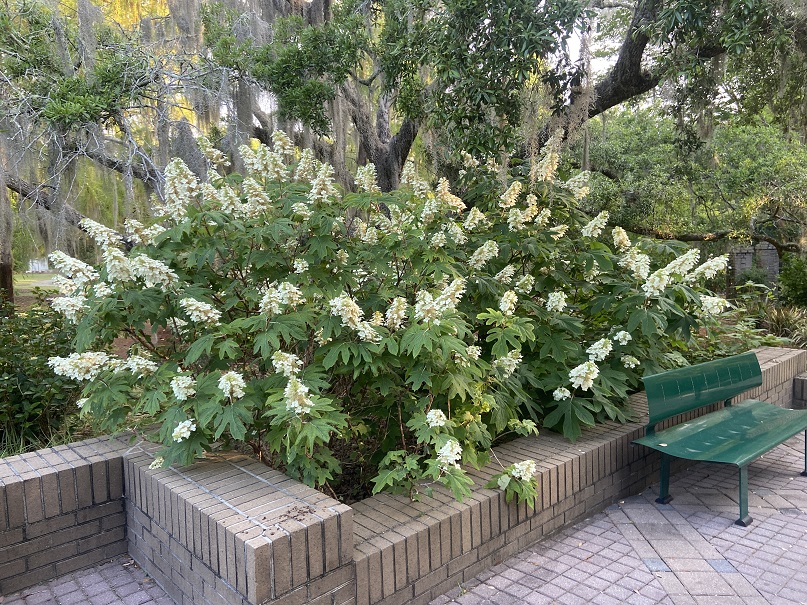 Oakleaf hydrangea (Hydrangea quercifolia) outside Anne's Garden
Oakleaf hydrangea (Hydrangea quercifolia) outside Anne's Garden
Now that your site is prepared, it’s time to get your plants in the ground. You will want to make sure, if you have multiple plants, that you have a general design in mind. If you’re not sure what to do, I always recommend a very simple suggestion: make sure plants that will be in the front of your bed are smaller than those that are in the back. If you have a bed that can be viewed from all sides, ensure the plants in the front are shorter, and the ones in the middle are taller. Makes sense, right? If you put a shorter plant behind a taller one, you won’t be able to see it! Once you get the heights sorted out, you can then decide if you want to play with different color or even textural choices as you design your bed.
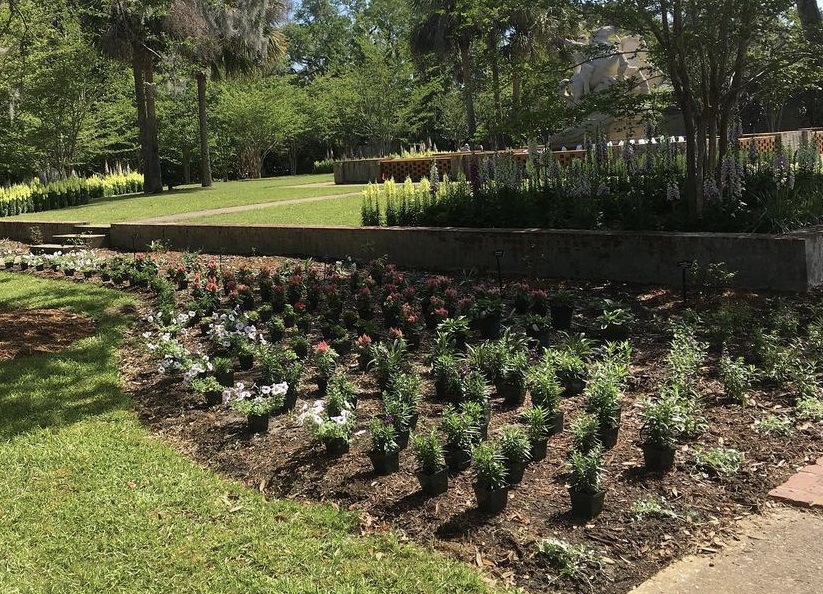 Plants laid out for planting in the Poetry Garden
Plants laid out for planting in the Poetry Garden
Once your plants are laid out, it’s time to get them in the ground. Whether you’re planting a 4” pot or a 3 gallon pot, you will want to make sure you get your plants in the ground so their roots are covered – but don’t go overboard! It’s tempting to plant a little deeper to help make sure the plant is truly in the ground and stable. Unfortunately, planting too deep for most plants can be a problem. It can lead to the plant rotting. If you are planting something like a tree or a shrub, ensure the root flare, or where the roots begin to flare out, is not covered by soil. It is much easier to remove excess soil before a plant is in the ground, than after.
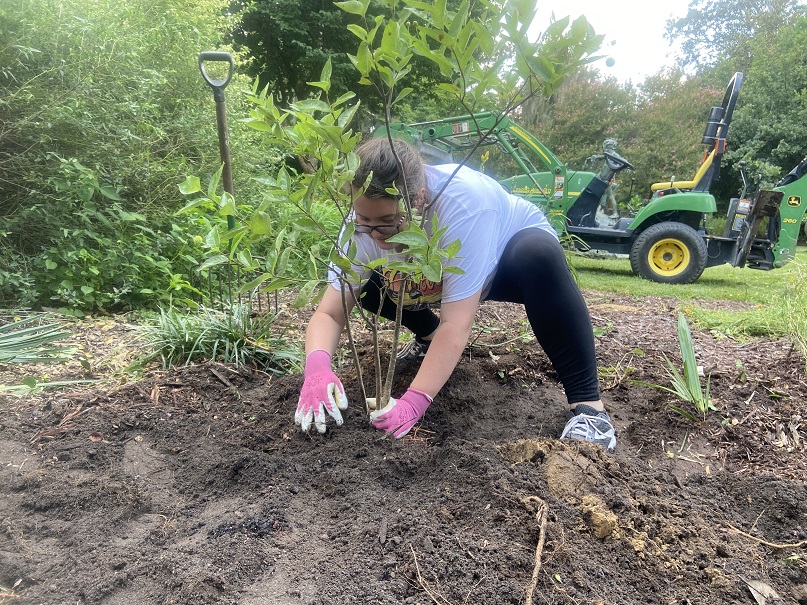 Planting a shrub
Planting a shrub
After you’ve gotten your plants in the ground and have firmly packed in the soil, it’s time to mulch! Mulch has a ton of benefits, including weed suppression, water retention, regulation of soil temperature, and keeping things looking tidy and clean. To learn more about mulch and what options are out there, check out our blog on mulch HERE.
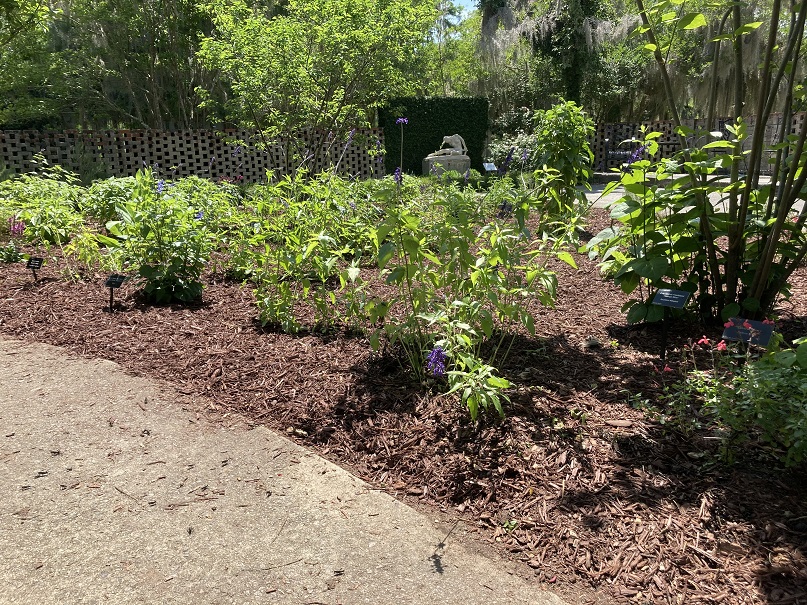 A mulched bed in the Upper Left Wing
A mulched bed in the Upper Left Wing
At Brookgreen Gardens, even though we keep our soil rich with compost, we still add fertilizer to our new plantings. For plants like annuals that you want a big display from, a quick release fertilizer will do the trick. For things like vegetables, and even roses, monthly applications of fish emulsion are a satisfying meal for your plants. I know, I know realistically, applying stinky fish emulsion once a month is a lot to ask for, and I’ll be honest – I slack a lot at home too, and am much more punctual here at Brookgreen. If you can get into the habit of regularly fertilizing heavy feeding plants, you will be rewarded with even more vegetables and flowers. If not, your plants will likely do fine, but may not be as vigorous or produce as much as they otherwise would.
 Cinco De Mayo™ Rose (Rosa 'WEKcobeju' (Cinco De Mayo™))
Cinco De Mayo™ Rose (Rosa 'WEKcobeju' (Cinco De Mayo™))
An important part of maintaining your garden is watering. I know this can create high anxiety for people, and I get it. One of my first jobs in the horticulture world was as the weekend waterer in the greenhouse at a public garden. There would be days where the plants would be sopping wet, but there I was, watering away. When your job title is “weekend waterer,” how do you not water?! I always tell people my chunk of wisdom. Ready? Only water your plants when the soil is dry. I know, it’s common sense and it’s simple, but it helps to hear from someone “in the biz” – or at least it did for me when my boss asked me to stop drowning the plants! Of course, take this with a grain of salt. If you have plants that like heavy water or are aquatic plants, waiting until the soil is dry may mean it’s too late. However, for most plants, just watering when they are dry, and not on some schedule of once a week, or every Monday and Thursday, is usually in your plants best interest.
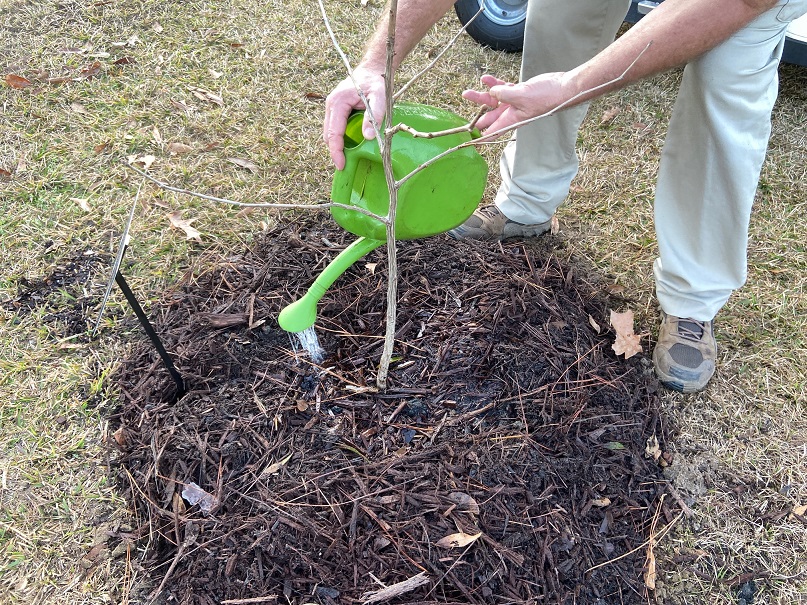 A new planting being watered
A new planting being watered
As your garden begins to grow, you may find you need to help guide it. As your plants mature, they may require pruning to help keep them within their intended growing space, to increase vigor, or even to encourage more or repeat flowering. Keeping a record of what you planted is important and will help you be able to quickly look up information about specific pruning, and general care, needs for your plants. Certain plants are recommended to be pruned at certain times of the year, to ensure you are not removing their flower buds. Be sure you know what your plant needs, and what time of year it needs it, to help your garden put on the best show it can!
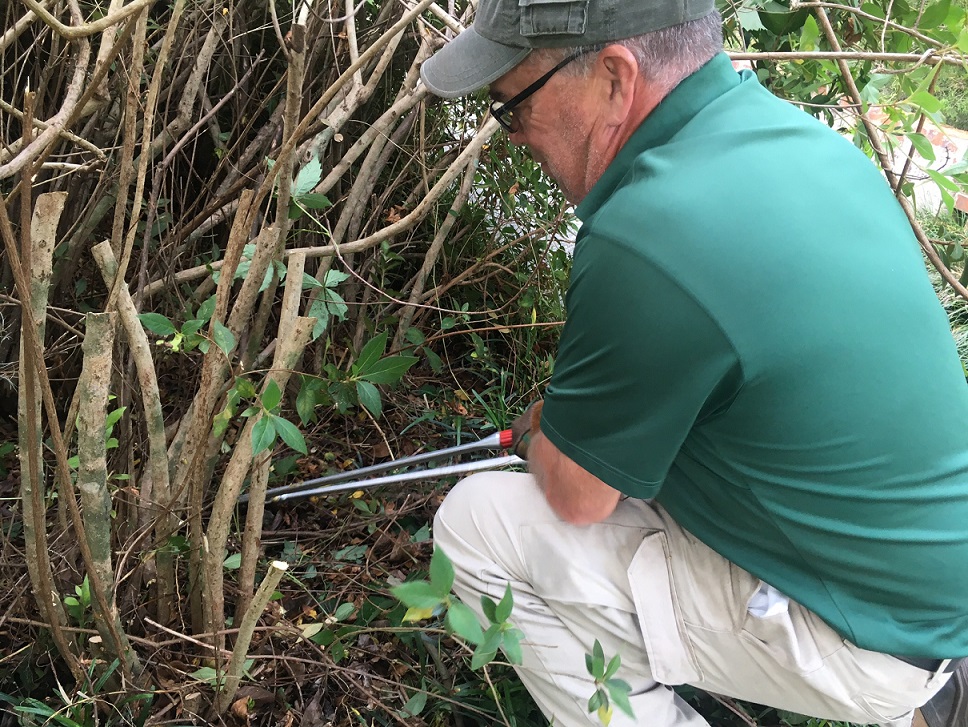 Pruning azaleas with loppers
Pruning azaleas with loppers
The last main aspect of having and maintaining a garden is weeding. I know, you hate to hear it, but it’s true. By taking steps in preparing our site well and putting down mulch, we help to alleviate some of the weed pressure and irritation. If there’s a will, there’s a weed, and there is always a will in the garden! Keeping your garden weeded will help your plants shine and help to keep the nutrients in the soil available for your intended plants, and not the weeds. I recommend hand pulling weeds from garden beds, especially because chemical herbicides can wind up making contact with your intended plantings and causing them damage, or even killing them. Another important weeding tip is to pull the weeds before they set their seeds. You may have heard the saying “One year seeding is seven years weeding.” That’s because seeds can stay viable in the soil for years and can come up years after you’ve even seen the weed! Save yourself the aggravation and pull them as soon as you see them!
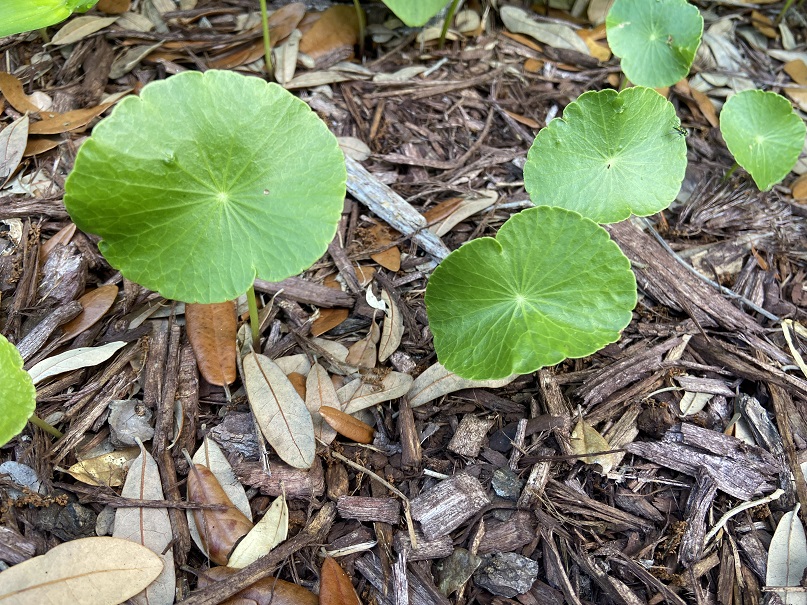 Dollarweed (Hydrocotyle spp.)
Dollarweed (Hydrocotyle spp.)
Starting and maintaining a garden is a rewarding process. Growing plants is a great way to get outside and enjoy nature, while also helping to play a part in it! Even though you’ll have your own beautiful garden at home, don’t forget to come and visit us here at Brookgreen Gardens to get some more garden inspiration, and to continue enjoying the great outdoors.
See you in the Gardens!
Hours
Hours: Monday & Tuesday 9:30 AM - 5:00 PM
Wednesday - Sunday 4:00 PM - 9:00 PM
For daytime admission, gates close at 4:30 PM. For their safety and the safety of our animal collection, pets are not allowed, nor can they be left in vehicles inside Brookgreen. Service animals that have received special training to assist disabled persons are welcome.
Tickets
Daily General Admission Tickets for 7 consecutive days
Children 3 and under: Free
Children 4-12: $14
Adults 13-64: $25
Seniors 65 & Over: $23
Location
1931 Brookgreen Drive
Murrells Inlet, SC 29576
Off US Highway 17 Bypass, between Murrells Inlet and Pawleys Island on South Carolina's Hammock Coast
843-235-6000
GOOGLE DIRECTIONS